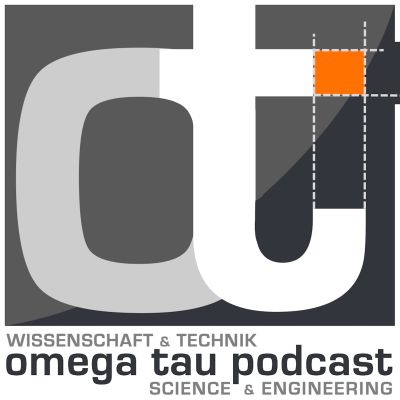[We have episodes in German and English] How do scientists uncover phenomena and explain their connections? How do engineers design machines, methods and infrastructure? At omega tau, experts give detailed answers. Over the last ten years, we have produced 300 episodes in which we dug deeper, until we ran out of questions. Join us on our journey through the world of science and engineering: the closer you look and listen, the more interesting things get.
http://omegataupodcast.net
episode 242: Satellite Testing at ESTEC
Guest: Mark Wagner Host: Markus Voelter Shownoter: Andy Joiner
This is the last episode recorded during my visit to ESA‘s ESTEC last fall. I get a tour of the Test Centre with the head of the section, Mark Wagner. We discuss the various test stands and facilities, including the thermal vacuum facility, the large space simulator, the thermal vacuum chamber, the vibration facilities, electromagnetic testing and acoustic testing.
Introduction 00:02:13Mark Wagner | Head of section for test facility and test methods (ESTEC - Space Research and Technology Centre) | Environmental testing | Qualify design | Acceptance testing | Structural thermal model | Validate assembly
Clean room 00:04:10Clean room | ISO 8 | Prevent contamination | Ensure repeatability (Vibration test - frequency sweep)
VTC1.5 Thermal vacuum facility 00:05:38Solar simulator | 25kW xenon discharge lamp | 20 solar constants | BepiColombo Mercury mission | Flux | Sunshield | Autonomous test facility | Thermal radiation | 1.5m diameter x 3.5m long | Ideal for component testing
Large space simulator 00:10:14(Large space simulator - LSS) | 121 focussing mirrors | 19 x 25kW xenon lamps | 8-9 solar constants over 3m diameter | 2 solar constants over 6m diameter | Solar orbiter | Infrared lamps | Air venting | Corona effect | Electrodynamic Shaker (Footprint run - facility self-test) | Eigenfrequency | 160kN (16 Tonnes) force per actuator (LEAF - Large European Acoustic Facility) | Shaker 2kHz max | Acoustic 20kHz max | Avoid overstressing during tests | On-board sensors | Strain gauge | Accelerometer | Surface microphone | Integrity check | Low level frequency sweep before vs after | Regular calibration | Center of gravity | Moment of inertia | Spin-stabilisation | Dynamic balance | BepiColombo | Sentinel-2B | Galileo | 2-3 weeks to test | Some automation of tests | No direct acquisition of satellite data by the test facility | Cooled with high pressure water | Nitrogen purged to prevent ozone formation in bright light | Roots pump | Turbomolecular pump | Cryogenic panels to trap remaining molecules | Outgassing | 10e-7 millibar considered good | Bake-out
Phenix thermal vacuum chamber 00:47:58Phenix thermal vacuum chamber | 4m diameter 10m long | Thermal gradient testing | Preparation area | Container cleaned | Opened | Environmental stabilisation | Health checks | Functional checks | Instrumentation added | ETS operates facility | ESA owns facility
Hydra vibration facility 00:54:15Hydra vibration facility | 20 tonne test table | 8 x 680kN hydraulic actuators | Six degrees of freedom | Envisat (ATV - Automated Transfer Vehicle | Approx. 100Hz +- 7cm displacement) | Reaction wheels
Electromagnetic testing 01:02:25Maxwell test chamber | Electromagnetic compatibility | Faraday cage | Absorber cones | Auto compatibility test | Susceptibility test | Electrostatic discharge | 40m high | Anechoic chamber
Large European acoustic facility 01:06:43Acoustic test facility | Standing wave | Diffuse field acoustic testing | Concrete with epoxy | Acoustic modulator | 156dB max noise level
Micro vibration test facility 01:11:04Laser interferometry | Seismometer | Voice coil actuators | Micro Newton accuracy | Feed-forward | Negative-stiffness | Flight spare | Typical test 2-3 months | Some test for years
